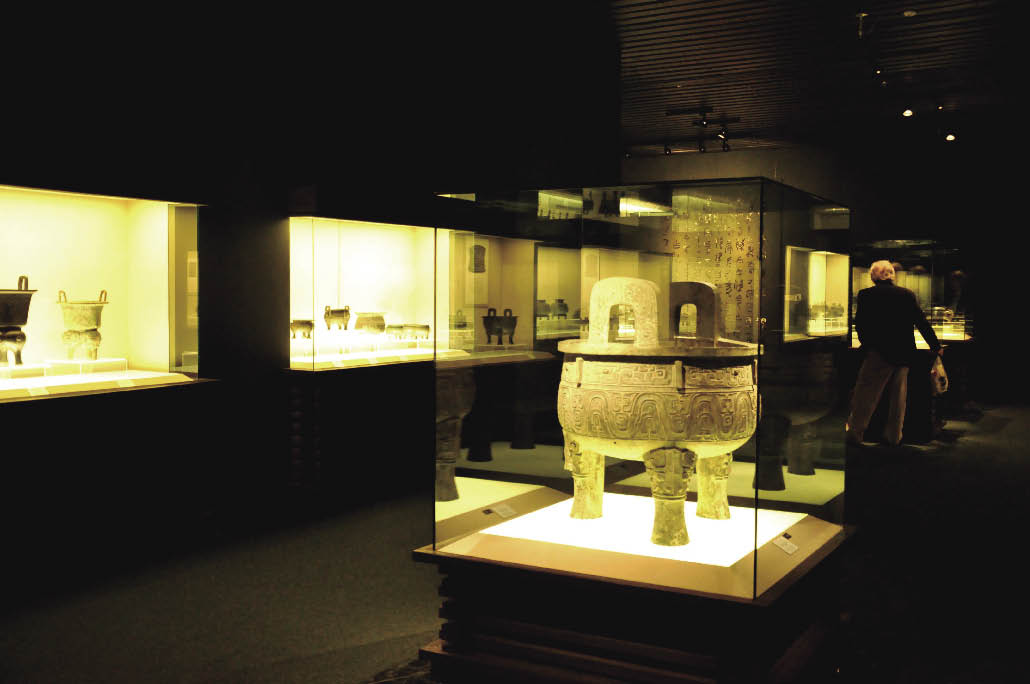| Shanghai for Art and Culture Hounds
By staff reporter ZHAO YAYUAN
SHANGHAI is not only an economic powerhouse, but also a cultural wellspring of China. A rough count will come up with more than 20 well-known museums, not to mention art galleries of various importance that number no less than 100. These cultural and art facilities add diversity to the itinerary of visitors headed for the World Expo.
The Shanghai Museum
 |
|
The Dake Ding is one of the most valuable holdings in the museum's collection. |
This is a comprehensive art museum located at 201 Renmin Road and simply the best place to appreciate ancient Chinese art within and around the city. The museum has a collection of nearly 1 million pieces, including 130,000 very valuable ones. It is best known for its trove of bronze ware, pottery, porcelain, paintings and calligraphic works.
The architecture of the museum carries forward the concept of the traditional Chinese cosmos that the heaven is round and the earth square. The unique structure has a square base and a round top surmounted by an arch.
The first floor is dedicated to ancient bronze ware and sculpture; the second, pottery and porcelain; the third, paintings, calligraphy and seals from various dynasties; and the fourth, ancient jade ware and currencies, furniture from the Ming and Qing dynasties (1368-1911), and arts and crafts of China’s minority ethnic groups.
The Ancient Bronze Hall houses over 400 exhibits, mapping China’s bronze art from the 18th B.C. to the third century B.C. The most prominent of them is the Dake Ding (Tripod) from the late Western Zhou Dynasty (1046-771 B.C.). It is a 201.5-kg heavyweight, standing 93.1 cm tall. The rim is engraved with animal faces; the outer surface of the round body is lined by wave designs; the inner surface bears an inscription of 290 characters. Background music played on bronze chimes echo in the hall.
The Ancient Sculpture Hall on the same floor is also worth a visit. It showcases the developmental progression of Chinese sculpture from the Warring States Period (475-221 B.C.) to the Ming Dynasty (1368-1644). A great number of them are Buddhist sculptures, which give a clue to the impact of Buddhism on traditional Chinese culture. The Ancient Pottery and Porcelain Hall has more than 500 artifacts traversing the great historic span from the Neolithic Age to the late Qing Dynasty; among them are the prototype celadon, tri-color porcelains of the Tang Dynasty (618-907) and the colorful porcelains of Jingdezhen.
The painting and calligraphy halls also feature priceless collections from different dynasties. The more than 70 pieces displayed in the Calligraphy Hall are original works by masters of various calligraphic schools.
Rotating and irregular exhibitions of cultural relics and art works are mounted from the collections of other museums in China and around the world. Currently, a choice selection from the collection of Italy’s Uffizi Gallery – a primary art museum in Florence, Italy – is on display at the Shanghai Museum till June 6.
Opening hours: 9:00-17:00 (year-round; no entry after 16:00)
Entrance fee: Except for special exhibitions, the ticket is free, and is provided upon requisition (a daily issuance of 5,000).
| 